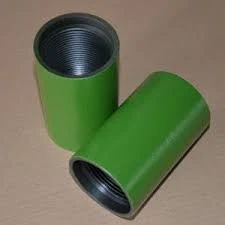- Afrikaans
- Albanian
- Amharic
- Arabic
- Armenian
- Azerbaijani
- Basque
- Belarusian
- Bengali
- Bosnian
- Bulgarian
- Catalan
- Cebuano
- Corsican
- Croatian
- Czech
- Danish
- Dutch
- English
- Esperanto
- Estonian
- Finnish
- French
- Frisian
- Galician
- Georgian
- German
- Greek
- Gujarati
- Haitian Creole
- hausa
- hawaiian
- Hebrew
- Hindi
- Miao
- Hungarian
- Icelandic
- igbo
- Indonesian
- irish
- Italian
- Japanese
- Javanese
- Kannada
- kazakh
- Khmer
- Rwandese
- Korean
- Kurdish
- Kyrgyz
- Lao
- Latin
- Latvian
- Lithuanian
- Luxembourgish
- Macedonian
- Malgashi
- Malay
- Malayalam
- Maltese
- Maori
- Marathi
- Mongolian
- Myanmar
- Nepali
- Norwegian
- Norwegian
- Occitan
- Pashto
- Persian
- Polish
- Portuguese
- Punjabi
- Romanian
- Russian
- Samoan
- Scottish Gaelic
- Serbian
- Sesotho
- Shona
- Sindhi
- Sinhala
- Slovak
- Slovenian
- Somali
- Spanish
- Sundanese
- Swahili
- Swedish
- Tagalog
- Tajik
- Tamil
- Tatar
- Telugu
- Thai
- Turkish
- Turkmen
- Ukrainian
- Urdu
- Uighur
- Uzbek
- Vietnamese
- Welsh
- Bantu
- Yiddish
- Yoruba
- Zulu
Understanding the Distinctions Between Casing and Tubing in Oil and Gas Operations
The Differences Between Casing and Tubing in Oil and Gas Industry
In the oil and gas industry, the terms casing and tubing are fundamental concepts that play integral roles in the extraction of hydrocarbons from underground reserves. While both are types of pipes used in well construction, they serve distinct purposes and have different characteristics. Understanding the differences between casing and tubing is crucial for professionals in the field, as well as for those interested in the mechanics of oil and gas production.
What is Casing?
Casing is a series of steel pipes that are inserted into a drilled well to provide structural integrity and support to the borehole. It is typically used throughout the entire depth of the well and serves several critical functions. Firstly, casing prevents the wellbore from collapsing by maintaining the integrity of the hole. This is particularly important in unstable geological formations where the risk of collapse is high.
Secondly, casing isolates different pressure zones and formations within the well. This isolation prevents fluids from one formation from migrating into another, which might otherwise lead to contamination and blowout risks. To achieve this, casing is usually cemented in place, creating a seal that effectively mitigates the movement of fluids and gases between different layers of rock.
Moreover, casing also protects groundwater resources from potential contamination caused by hydrocarbons, which is a significant environmental consideration. It forms a protective barrier, ensuring that drilling operations do not interfere with underground water supplies.
What is Tubing?
In contrast, tubing refers to the smaller-diameter pipes that are installed within the casing. Tubing is used to transport oil and gas from the reservoir to the surface once hydrocarbon production begins. Unlike casing, which remains in the well throughout its life, tubing can be removed and replaced as needed to address operational concerns such as wear and tear or changes in production requirements.
Tubing is typically available in various sizes and materials, often designed to withstand the conditions present in the reservoir, including high pressure and corrosive elements. The design and materials chosen for tubing depend on the specific characteristics of the well and the types of fluids being produced.
what is the difference between casing and tubing?

Another essential aspect of tubing is that it allows for the efficient management of production flow rates
. By varying the tubing design or using different completion techniques, operators can optimize the extraction process, enhancing the overall productivity of the well.Key Differences
1. Function The primary function of casing is to provide structural support and isolate pressure zones, while tubing transports hydrocarbons to the surface.
2. Installation Casing is cemented into place and remains in the well throughout its lifespan, whereas tubing can be removed and replaced as necessary.
3. Diameter Casing is typically larger in diameter than tubing, as it serves a different purpose within the well structure.
4. Material While both casing and tubing are usually made from steel, the specifications can differ based on their functions. Tubing may also feature additional coatings or treatments to resist corrosion and extend service life.
5. Maintenance and Operations Tubing is more frequently subjected to maintenance and operational changes, as it directly impacts production operations. Casing, on the other hand, is primarily a structural element.
Conclusion
In summary, both casing and tubing are essential components of oil and gas wells, each serving its unique purpose in the drilling and production process. Understanding the distinction between these two elements is crucial for professionals in the industry, as it impacts well design, safety protocols, and operational efficiency. As the oil and gas sector continues to evolve with advancements in technology and environmental regulations, the importance of proper casing and tubing management will only grow. This knowledge is vital for ensuring sustainable practices while maximizing production and safeguarding valuable resources.
-
Tubing Pup Joints: Essential Components for Oil and Gas OperationsNewsJul.10,2025
-
Pup Joints: Essential Components for Reliable Drilling OperationsNewsJul.10,2025
-
Pipe Couplings: Connecting Your World EfficientlyNewsJul.10,2025
-
Mastering Oilfield Operations with Quality Tubing and CasingNewsJul.10,2025
-
High-Quality Casing Couplings for Every NeedNewsJul.10,2025
-
Boost Your Drilling Efficiency with Premium Crossover Tools & Seating NipplesNewsJul.10,2025







